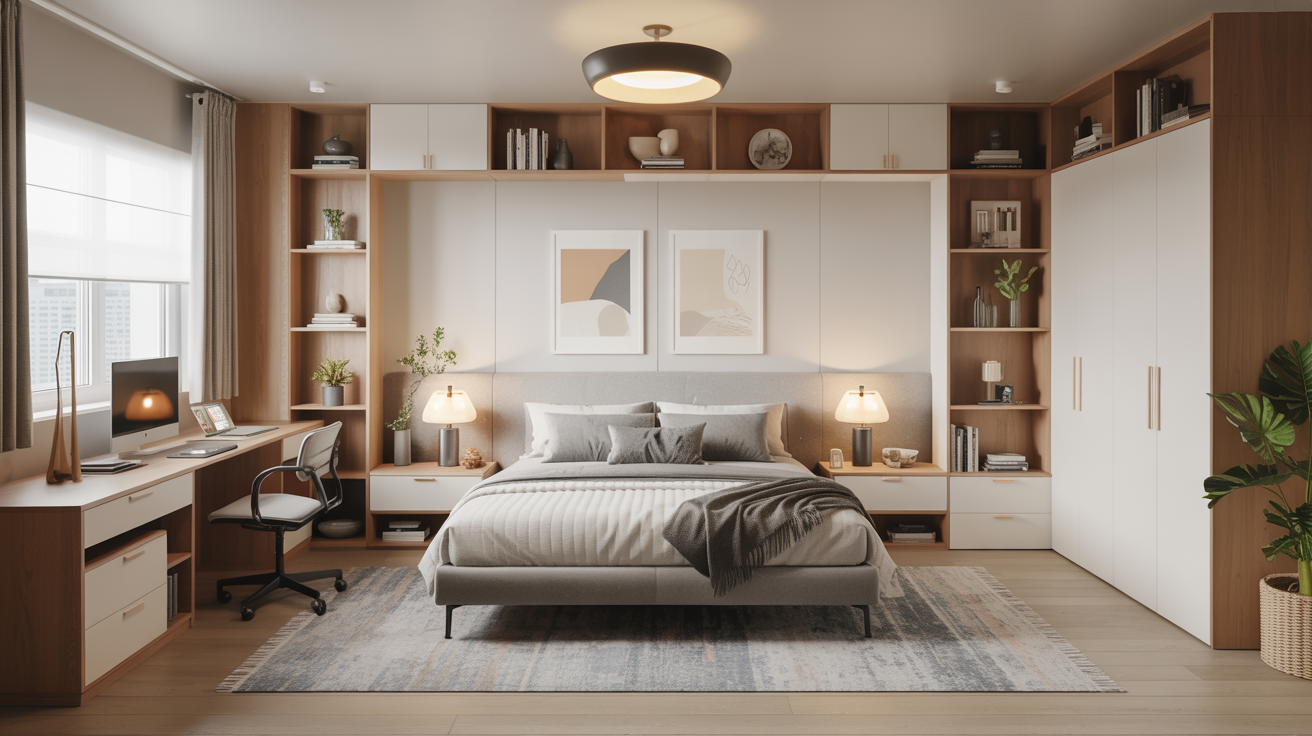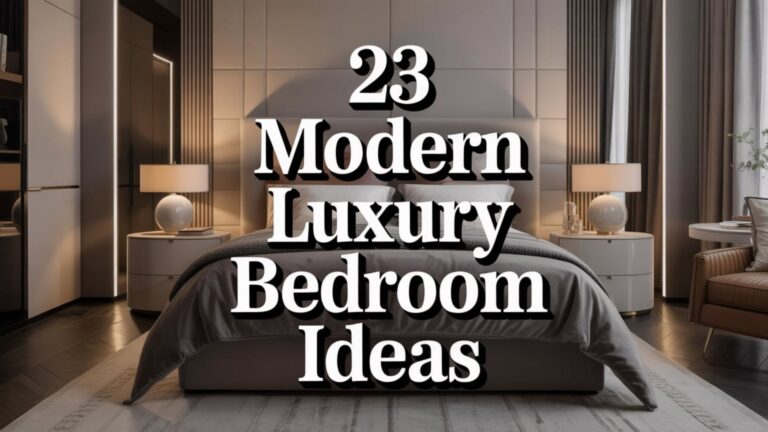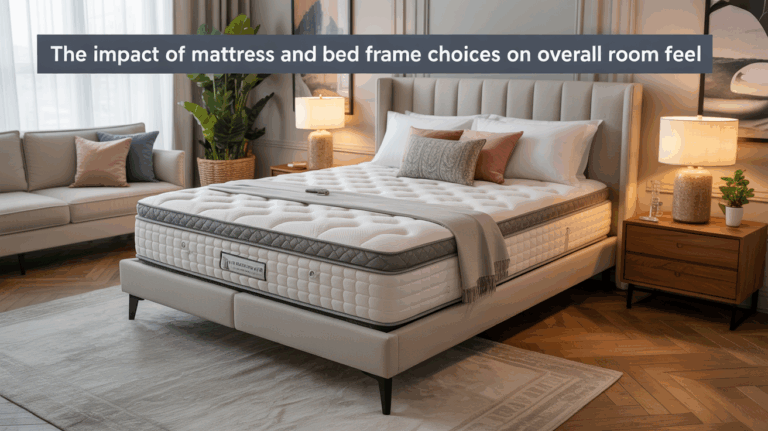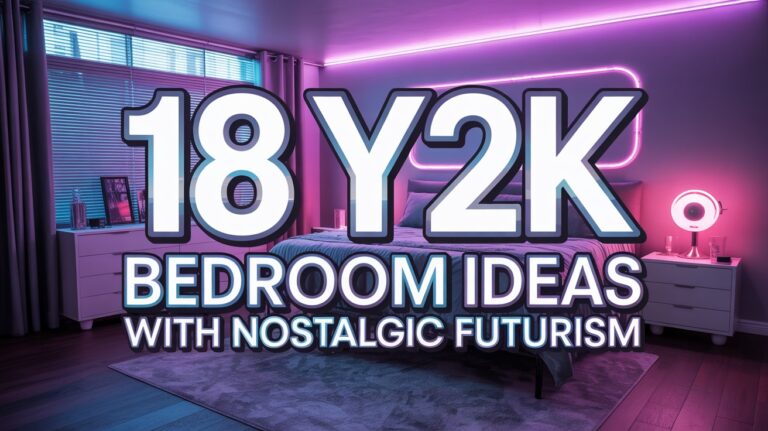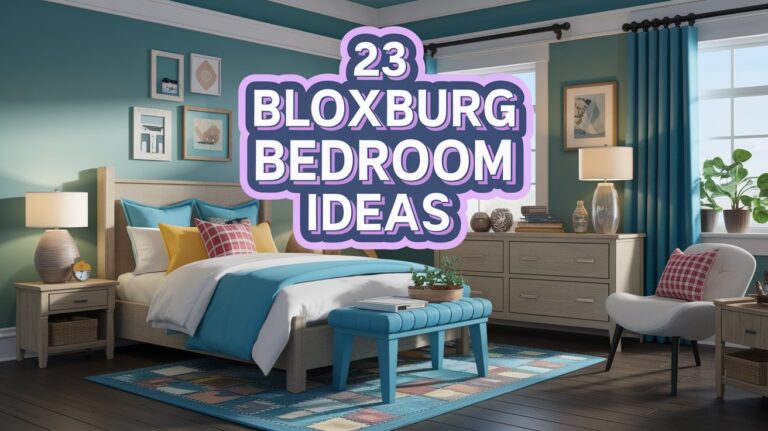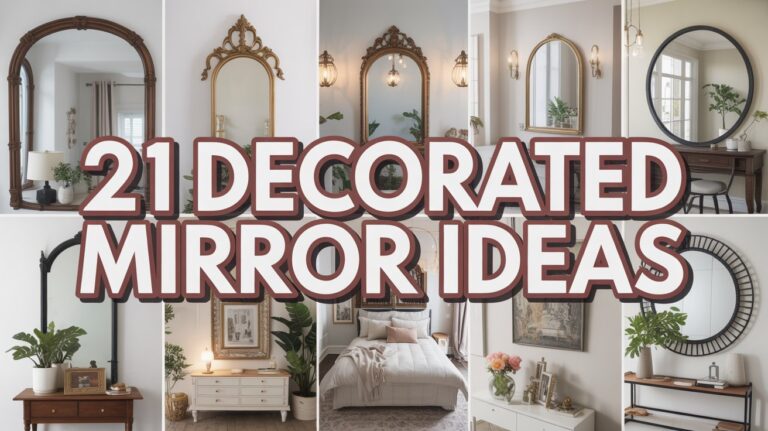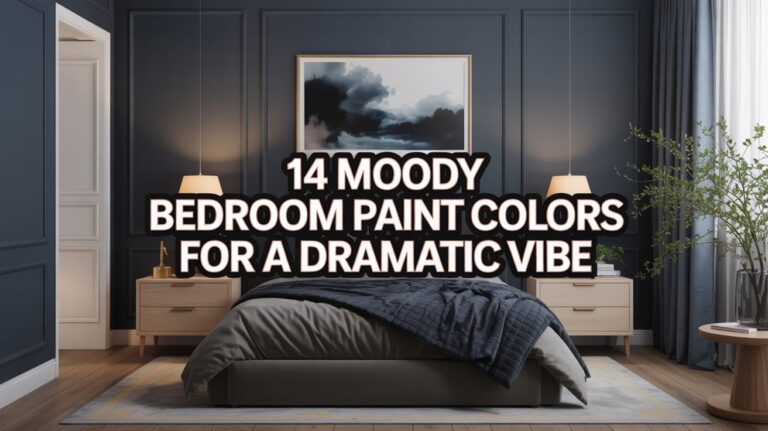How to Design Multi-Function Bedrooms for Work and Rest
I have been, or can be if you click on a link and make a purchase, compensated via a cash payment, gift, or something else of value for writing this post. As an Amazon Associate, I earn from qualifying purchases. Please read my full Affiliate Disclosure for more information.
Design a multi-function bedroom by clearly zoning work, rest, and lounge without walls. Use lighting to cue each zone, and choose height-adjustable desks with slim profiles that tuck away. Add privacy screens and soft storage to keep clutter out of sight, and layer textiles for day-to-night mood shifts. Favor calm colors, quiet corners near windows, and modular, versatile furniture. With smart layout tweaks, you’ll keep daily tasks flowing and downtime undisturbed—there’s more to optimize below.
Key Takeaways
- Zone the room with distinct work, sleep, and lounge areas using lighting, rugs, and furniture height to guide flow.
- Choose height-adjustable, slim-profile desks paired with compact chairs and simple cable management for adaptability.
- Add hidden or multi-use storage to conceal clutter and keep sightlines clear for a calm space.
- Layer lighting (ambient, task, dimmable) with warm/cool tones and textiles to support day-to-night transitions.
- Create a private napping nook by windows with privacy screens, calm colors, and light-reflective finishes for airiness.
Zoning a Multi-Function Bedroom: Defining Work, Sleep, and Lounge Areas
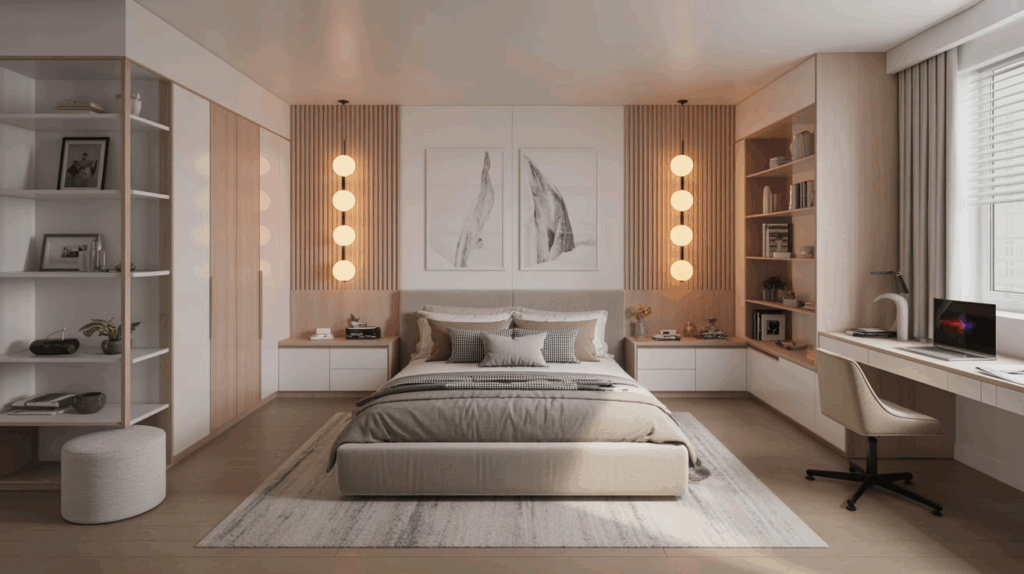
Zoning a multi-function bedroom isn’t about rigid walls; it’s about creating distinct zones that serve different needs without sacrificing harmony. You define a work nook, a sleep area, and a lounge space that coexist calmly. Use accessible cues like lighting warmth, rug textures, and furniture height to guide progressions. Consider bedroom acoustics so ringing keyboards won’t disturb rest, and arrange soft surfaces to dampen sound. Privacy screens can visually separate zones without sealing them off, preserving flow. Keep sightlines clear and clutter minimized, ensuring each area feels intentional, functional, and serene for daily life.
Choosing a Versatile Desk Setup That Maximizes Space
A versatile desk setup that maximizes space should be adaptable, compact, and visually light, so you can swap tasks without rearranging the room.
1) Choose a height-adjustable desk with a slim profile to reduce footprint while supporting ergonomics.
2) Pair ergonomic seating with a compact chair that slides under the desk for clean lines and easy changeover.
3) Implement simple cable management: a slim tray, few power outlets, and wireless peripherals to minimize clutter.
4) Use modular accessories (folding monitor arms, stackable organizers) that can reconfigure for work, study, or lounging without bulk.
Storage Solutions That Hide Clutter and Maintain Calm
Hidden clutter undermines calm, so choose storage that’s both discreet and accessible; when everything has a place, the room feels lighter and more purposeful. You’ll want hidden compartments integrated into walls or furniture to conceal odds and ends without visual clutter. Opt for multi use furniture: ottomans and benches with lids, beds with drawers, desks that fold into shelves. Label storage zones simply to reinforce consistency. Use shallow trays for small items and vertical organizers to maximize walls. Choose doors, soft-close drawers, and matte finishes that blend with your palette. Prioritize calm, accessible order over oversized, visible bins.
Lighting and Textiles: Switching Mood for Day and Night
You’ll explore how lighting shifts set the mood and how textiles softly frame those changes. Consider how warm vs. cool tones, dimming options, and layerable fabrics shape ambience from day to night. Think about day–night color progressions that harmonize lighting, textures, and overall function.
Lighting for Mood Shifts
Lighting for mood shifts helps you smoothly shift from day to night. You’ll balance light layers to support work, rest, and progression. Use these fundamentals:
- Ambient glow: soft, even illumination that reduces glare and sets a calm base.
- Task lighting: focused beams for reading or writing without shadowing.
- Dimmer strategy: adjustable brightness to morph from alert to relaxed.
- Color temperature: cooler tones for focus, warmer tones for winding down.
Combine sources discreetly, place controls within reach, and tailor to activities, textures, and layout for a cohesive, responsive space.
Textiles and Ambience
Textiles shape mood as much as lighting does, so choose fabrics and patterns that respond to day and night shifts. You’ll layer textiles to modulate light, sound, and warmth, balancing function with atmosphere. Use textile layering to create zones: a morning-ready, crisp surface; a cozy, darker retreat for evenings. Mix ambient textures—wool, linen, velvet—with smooth synthetics to tune reflections and softness. Consider weight and drape for seasonal shifts, and adjust via throws, curtains, and cushions. Keep patterns subtle and scalable, so the room remains calm during work and inviting for rest, without distraction. Practically design to switch mood effortlessly.
Day-Night Color Transitions
As day shifts to night, let color changes guide mood by pairing brightness with warmth and depth. You’ll leverage color psychology and ambient lighting to create progressions that support work focus and rest. Use practical steps:
- Set a daylight palette with cool, bright tones for visibility during tasks.
- Introduce warm accents at dusk to ease transition and foster relaxation.
- Layer textiles and lighting to shift perceived color temperature gradually.
- Dim lights gradually, aligning with natural cues and morning brightness, for consistent mood.
This approach keeps spaces functional, aesthetically coherent, and cognitively supportive.
Private Napping Nooks Without Sacrificing Natural Light
Creating private napping nooks that still welcome abundant natural light means prioritizing placement, scale, and materials that blur the line between rest and daytime glow. You’ll locate soft seating near tempered daylight, using low-profile furnishings and light-reflective finishes to keep the space airy. Use privacy screens or frosted panels that avoid blocking true light, not walls. Choose window treatments that control glare without sacrificing view—cafe blinds, sheer curtains, or adjustable shades. Keep color calm and textures warm, with compact storage to reduce clutter. The result is a serene, bright retreat that supports quick rests without dimming the room’s ambience.
Real-Life Layouts, Budget Tricks, and Quick Makeover Hacks
You’ve seen how private nooks can stay bright and airy; now it’s time to translate that into real-life layouts, budget-smart tweaks, and fast makeover hacks you can actually use.
- Prioritize artificial lighting layering: ambient, task, and accent to preserve openness without cost creep.
- Choose ergonomic furniture that packs function into slim footprints and promotes posture.
- Opt for modular zones: a compact workspace, a tucked-away bed, and a wardrobe that doubles as a room divider.
- Use affordable accents—mirrors, light fabrics, and removable decals—to refresh at low expense.
Conclusion
You’ve learned how to carve a single room into zones that work, rest, and recharge. Keep the work area compact, the bed tucked away, and a lounge corner ready for break-time. Choose clever storage that vanishes from sight, and switch lighting and textiles to shift mood with ease. Napping nooks stay bright enough for quick dozes, not distractions. With smart layouts, budget swaps, and quick hacks, you get a calm, productive, and stylish multi-function bedroom.
